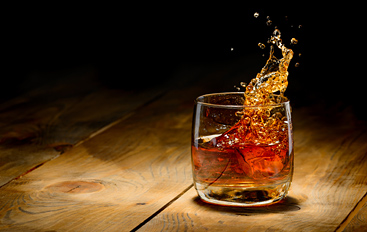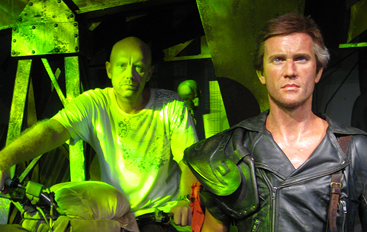Nuclear Bomb Explosion Simulator
Introduction
The nuclear bomb simulator shows the three main dangers from a nuclear war — fireball, blast, and fallout — as the three coloured tabs across the top of the map. Try it out by typing the name of your closest town or military target. Or just let it pick a random location. Initially it loads with a typical Soviet weapon and a randomly selected Australian location.
Note that the "Fallout Map" button works on a random wind direction, and clicking on it repeatedly will give different fallout maps based on a different direction of wind.
The cover image is U.S. Air Force Capt. Zachary Proano, left, 23rd Bomb Squadron radar navigator, and Capt. Andrew Parlsen, right, 23rd BS Navigator, conducting a training mission on a B-52H Stratofortress over Nevada. The B-52H is a long-range bomber built to carry nuclear weapons. Source: Airman Magazine.
Purpose
The main purpose of the simulator is to show that by far the greatest danger from nuclear attack is found close to where any bombs are detonated. The simulator was developed by Carlos Labs and modified for this web page by prepping.com.au. I haven't checked the distance calculations in detail, though they seem to be realistic.
The fallout would eventually spread over a much greater area in real life than shown on the map, and would depend on whether it was an air burst or ground burst detonation. The fallout map in this simulator is for a ground burst, and shows the possible dispersion of radioactive isotopes after six hours of the explosion, assuming a constant gentle breeze.
The radioactivity of nuclear fallout decays much faster than most people realise. After 14 hours it's 20 times less dangerous than it was one hour after detonation, and after 48 hours it's 100 times less.
This simulator shows the damage caused by a nuclear explosion. Search for a place, pick a weapon and select a damage map (thermal, pressure, or fallout).
Nuclear Warhead Yields
For bomb size comparison, note that most modern weapons are around the 100-1000 kiloton size. That is for each warhead: many modern missiles carry several individual warheads which can be spread within an approximately few hundred kilometre range of each other, which is known as a MIRV (Multiple Independent Re-entry Vehicle).
The first entry named "Feb 2013 7kt" refers to the approximately 7 kiloton size of the 2013 North Korean nuclear test. The Hiroshima bomb, code named Little Boy, was about 15 kt (kilotons, i.e. thousands of tons of TNT equivalent) in size. The Nagasaki bomb, code named Fat Man, was approximately 21 kt.
Modern and Historic Weapons
The U.S. weapons now fall principally within the 100 kt to 375 kt range, the average being approximately 250 kt. And the majority of Russian weapons are 550 kt; the average size is roughly 400 kt. A megaton (Mt) is 1000 kt or 1,000,000 tonnes of TNT equivalent.
Ivy Mike was the first thermonuclear (a.k.a. hydrogen) bomb test. The Tsar Bomba was the largest nuclear explosion ever, in Siberia, 1961.
The main thing to remember about nuclear war is that it's much more survivable than most people realise, especially in the Southern Hemisphere.
Books to Help Quit Drinking
Here's a selection of books to help to quit drinking, or to slow down on drinking. I'll write up better explanations as I get time... The first one is the one that helped me the...
How and Why I Quit Drinking
Since I have enough experience (and success) with this topic to easily write a whole book about it, or even a series of books, this first web page about how to quit drinking is going...

 Welcome to Prepping.com.au, the new web magazine.
Welcome to Prepping.com.au, the new web magazine.
 What is Prepping? A guide for normal people to get started.
What is Prepping? A guide for normal people to get started.
 How to use this site. When all else fails, read the instructions.
How to use this site. When all else fails, read the instructions.
 This is your mission, should you choose to accept it.
This is your mission, should you choose to accept it.




